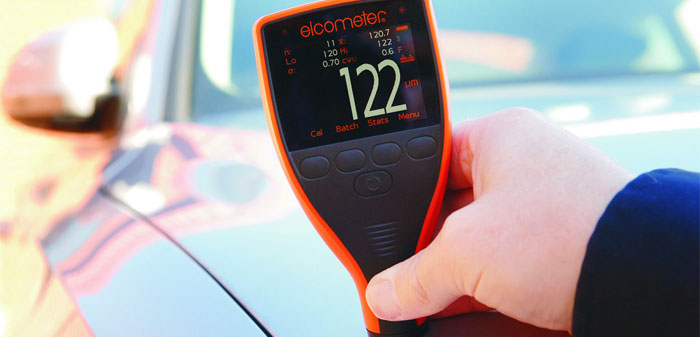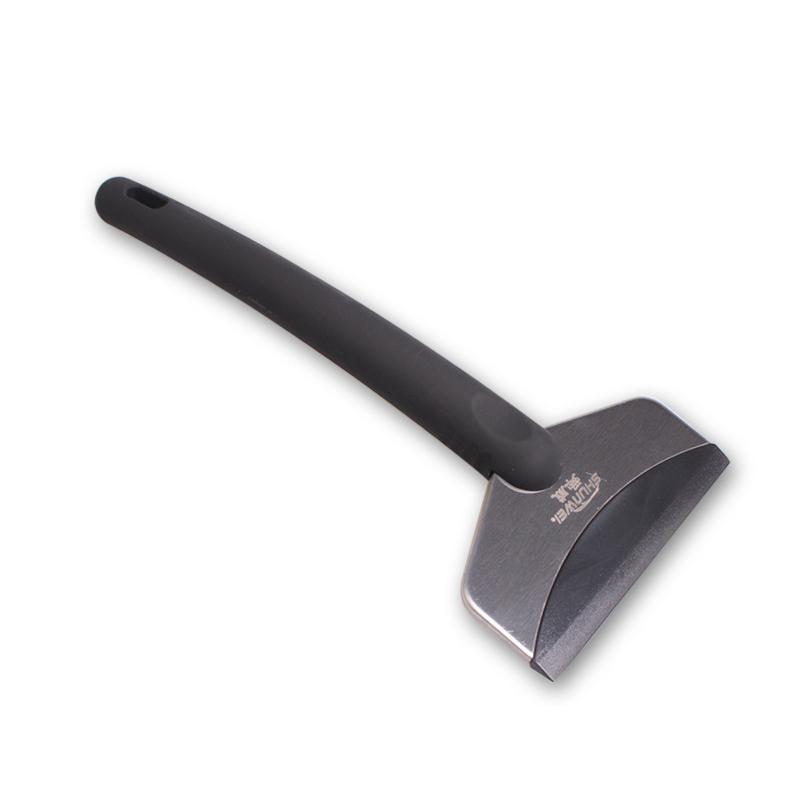
Coating thickness gauge - what to choose and how to use it?
Are you planning to buy a used car? Whether you're offered a car by a distant relative or a work friend, or you're looking for a car in the secondary market, you should have a paint level gauge with you at your initial inspection. It will present the history of car repair so far in the most authentic form. Which one to choose and how to use it? We advise!
Paint thickness gauge - what to look for when buying?
There are dozens of different automotive paint thickness gauges available on the market, but visually they do not differ much from each other. However, there is a significant price difference; the cheapest models cost just over PLN 100, while the most expensive ones even exceed PLN 500. What to look for when choosing a device in order to buy the best model and not overpay?
- Discovered substrates – each automotive varnish can easily measure the distance between its own gauge and steel. This is the most popular substrate from which the substrate for varnish is made. Some devices (for example, Blue Technology's DX-13-S-AL model), however, also work on aluminum, which will be relevant for people who want to buy a relatively young car; newer models have aluminum elements.
Moreover, some models also detect galvanized sheet, i.e. the material from which the parts are made. Thanks to this, you can find out that the element was certainly replaced in a given place. This is a function of, for example, the Expert E-12-S-AL paint thickness gauge from Blue Technology.
- Measurement accuracy – The lower the unit of measure, the more accurate the measurement will be. The most accurate are devices that show a change in the thickness of the varnish by only 1 micron (1 micron).
- memory – some models have a built-in memory that allows you to store several tens and even 500 measurements. This option will be useful for car dealerships that often take measurements.
- Probe cable length - the longer it is, the more inaccessible places you can put the probe. Good result above 50 cm; The aforementioned Expert E-12-S-AL sensor from Blue Technology offers a whopping 80cm of cable.
- Probe type - flat, pressure or ball type. The first type is the cheapest and requires the greatest return when measuring, because the probe must be very carefully applied to this element of the car. The pressure sensor costs a bit more, but is much easier to use. In turn, the ball probe is the most expensive of the models, which provides a very accurate measurement without thinking about whether it is correctly applied to the car.
- Color reference - an indicator of automotive paint, which indicates the originality of the coating with the color of the display. For example, Blue Technology's MGR-13-S-FE has this feature, and in its case, green means that the varnish is original, yellow means that the paint has been repainted, and red means that it has been puttied. or re-colored.
- Measurement duration – the best instruments can perform up to 3 measurements in just 1 second (for example, P-10-AL from Blue Technology), which significantly reduces the operating time.
Lacomer - how is it used?
The accuracy and efficiency of measurement is determined not only by the quality of the device itself and the functions available in it. Equally important is whether the user uses the car paint meter correctly. First of all, it should be taken into account that the thickness of the coating may differ depending on the brand of the car (mainly its origin, because Asian ones have less paint than European ones) and its element.
This means that Toyota can have the original, for example, 80 microns on the hood, and Ford even 100 microns. Moreover, the same Toyota, for example, will have 10 microns more or less on the wing than on the hood - so will Ford. And so on. Before the meeting takes place, it is worth preparing a list of values to be expected for a given make and model (including year). You can get this information from an authorized service center.
Before you start measuring the coating thickness, clean the “tested” place and calibrate the car varnish with the special plate that came with the device. Then accurately place the probe at the predetermined point on the vehicle body. This will be very important for flat models and pressure models. Ball bearings will always show you the exact result.
Measuring consists of applying a probe to various points on the same element of the car - the more sections of the roof you "inspect", the better. Remember that you can only varnish, for example, a corner. If the meter you have purchased has a large memory capacity, you do not need to record your results anywhere. However, if it only remembers, for example, 50 items, save the displayed information just in case.
So, as you can see, both choosing and using a meter is not very difficult, but it does require focus and precision. It is worth spending some time and attention on both of these pursuits, as it can lead to choosing a much better car than you planned.
More manuals can be found on AvtoTachki Passions in the Automotive section.
Shutterstock
